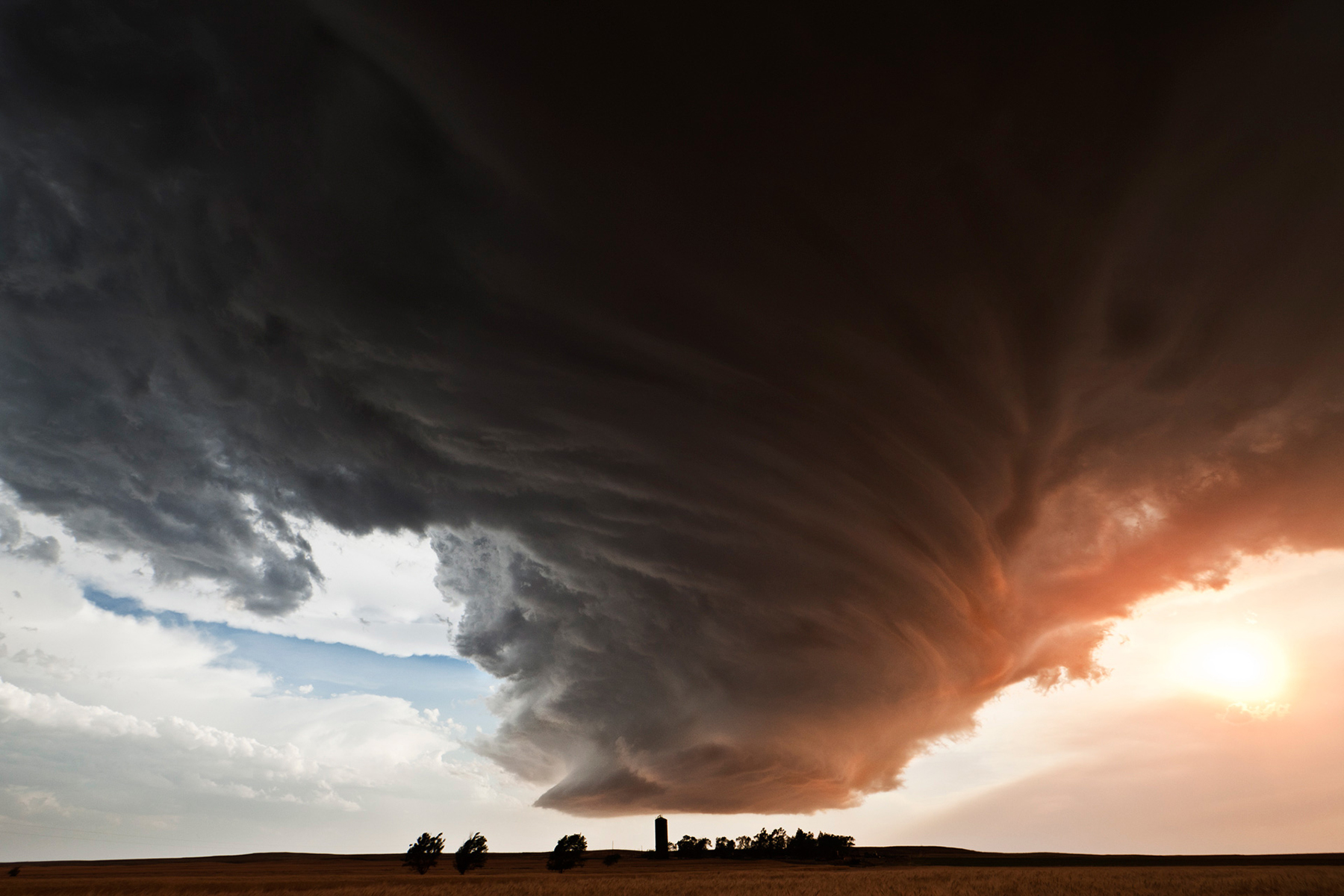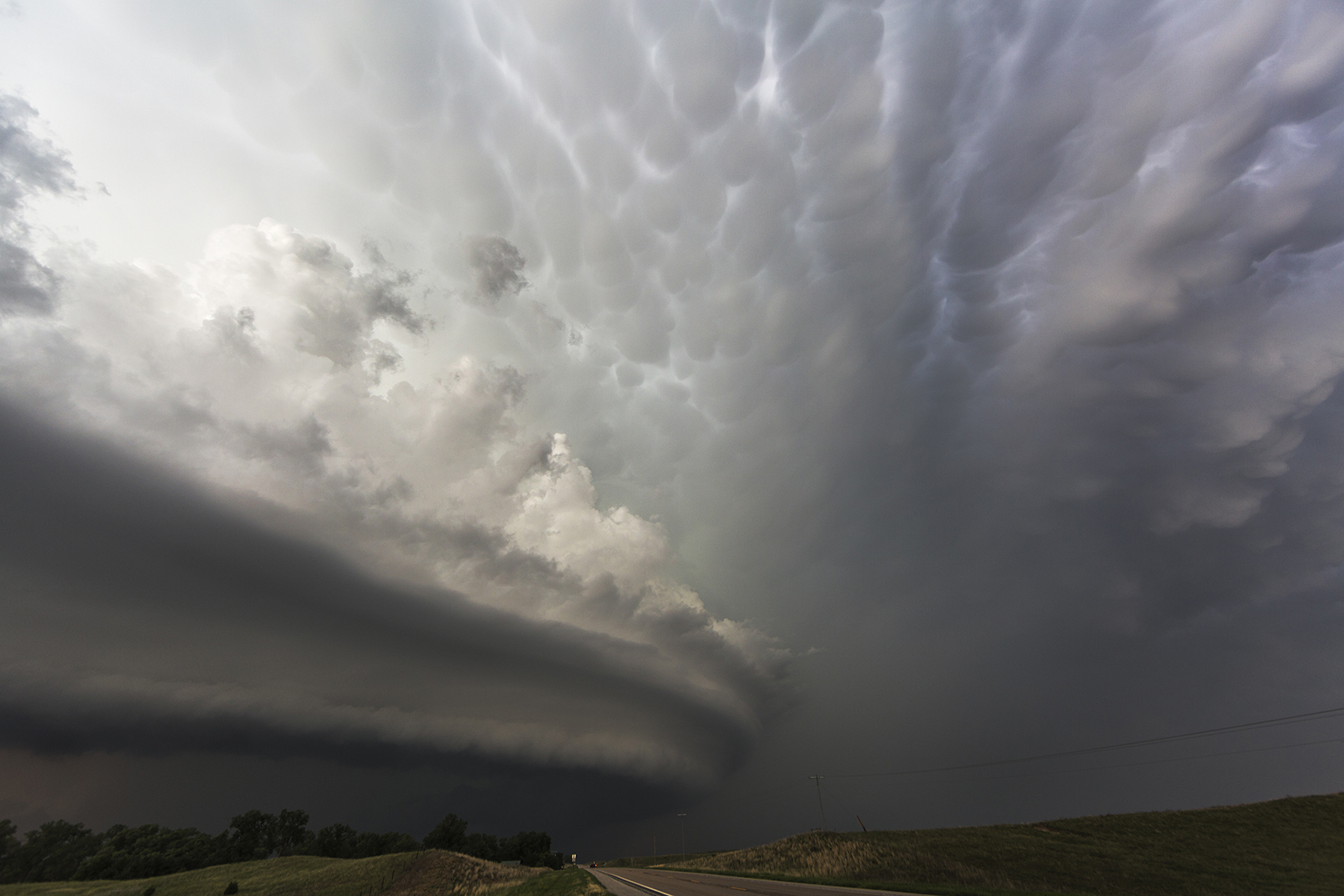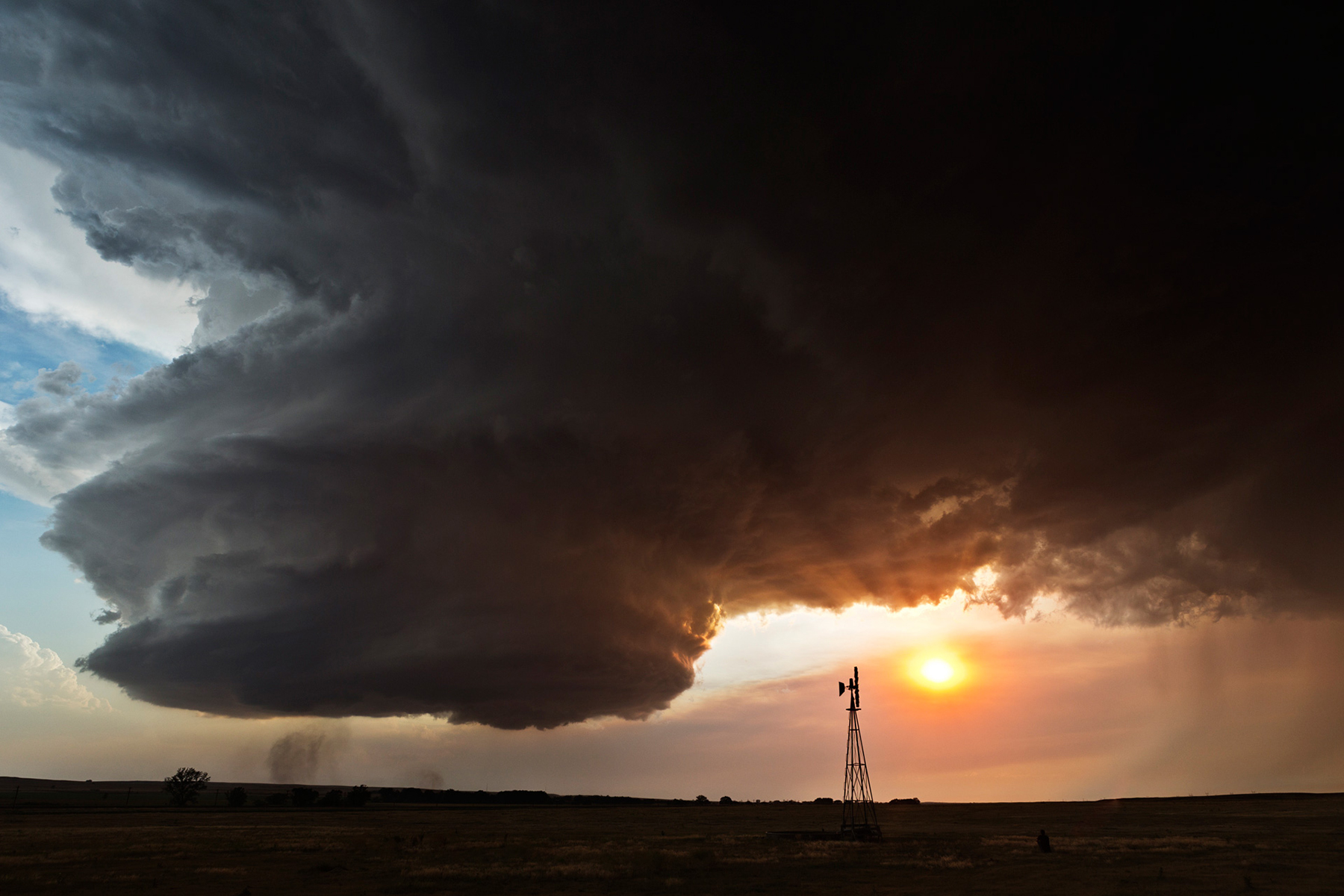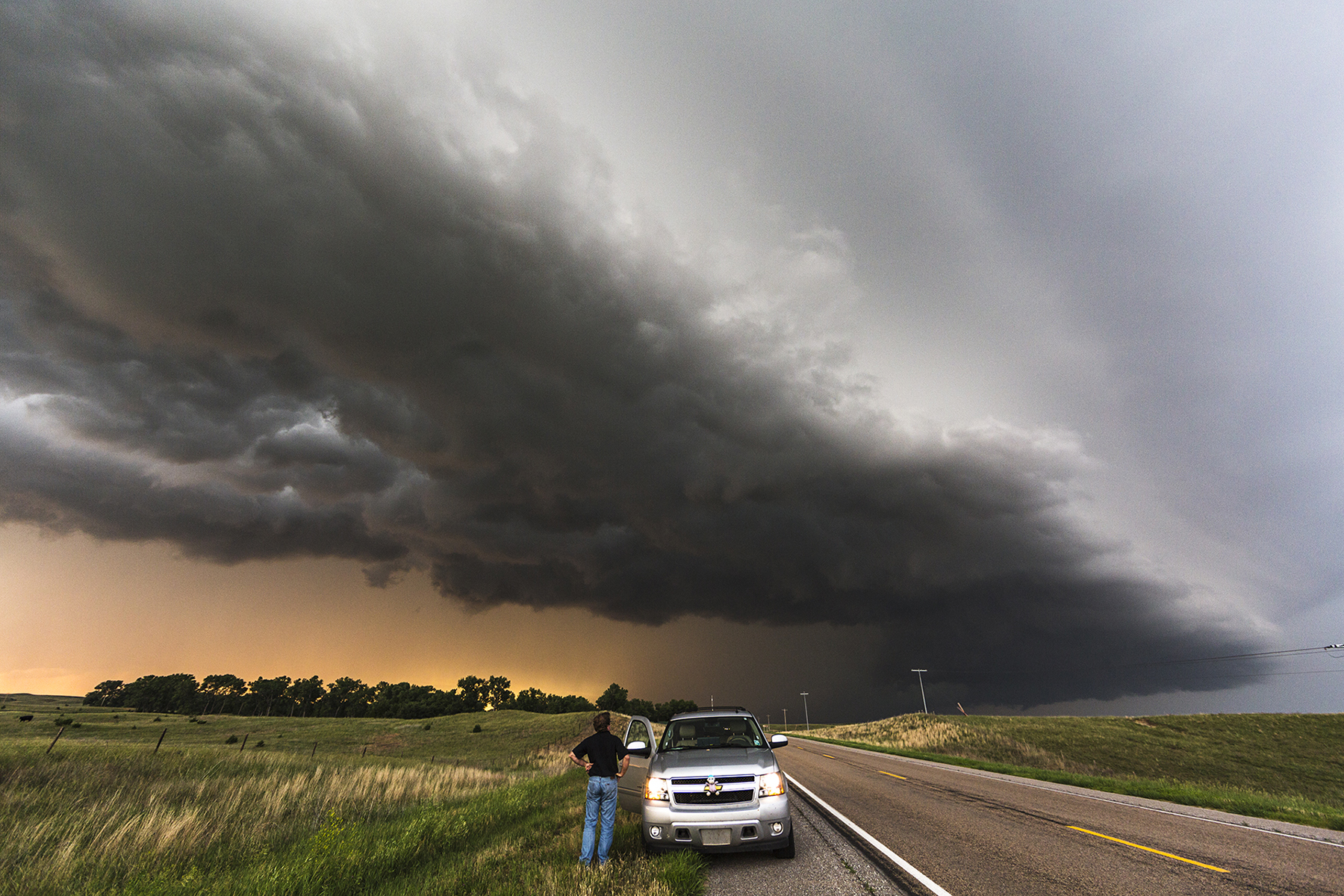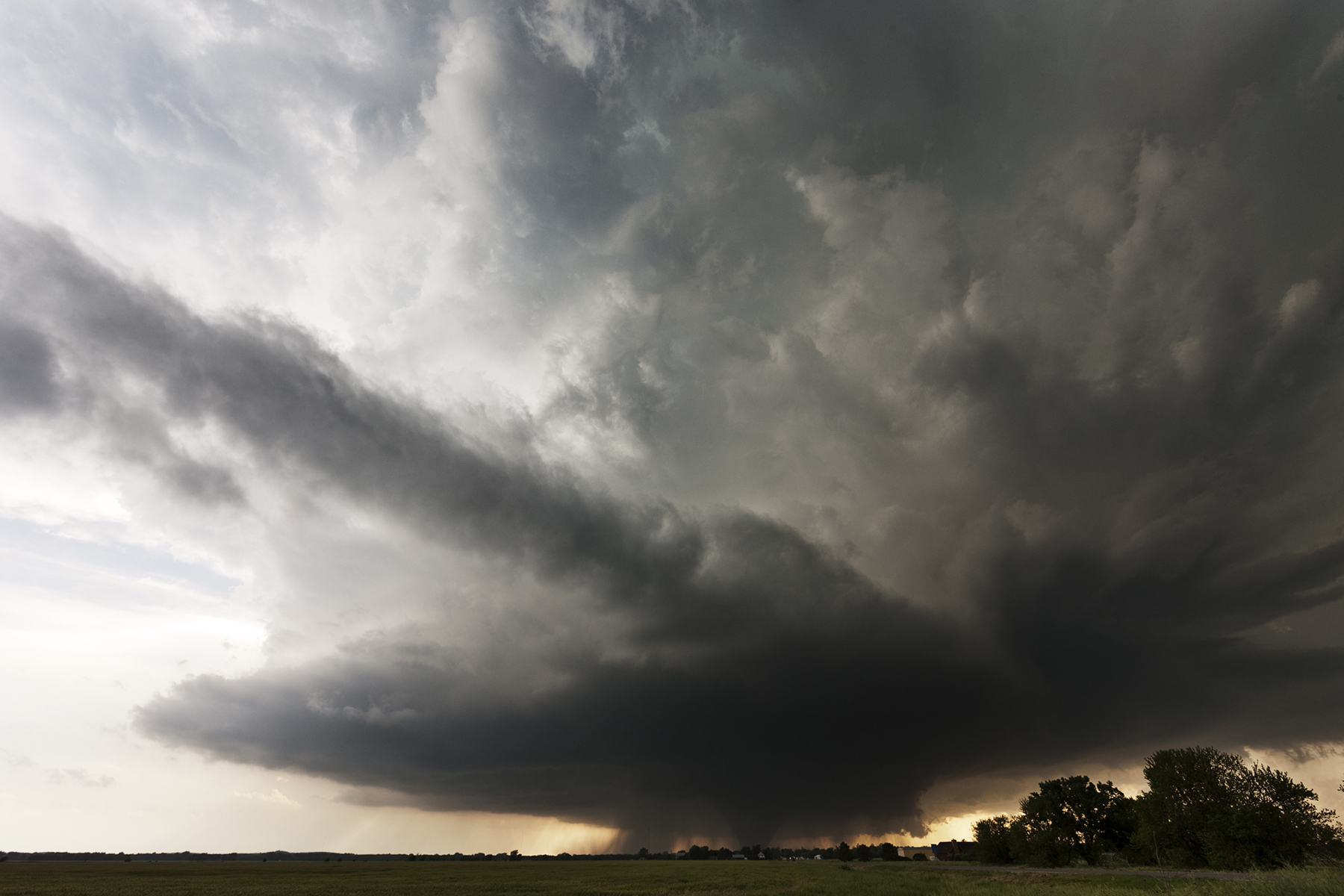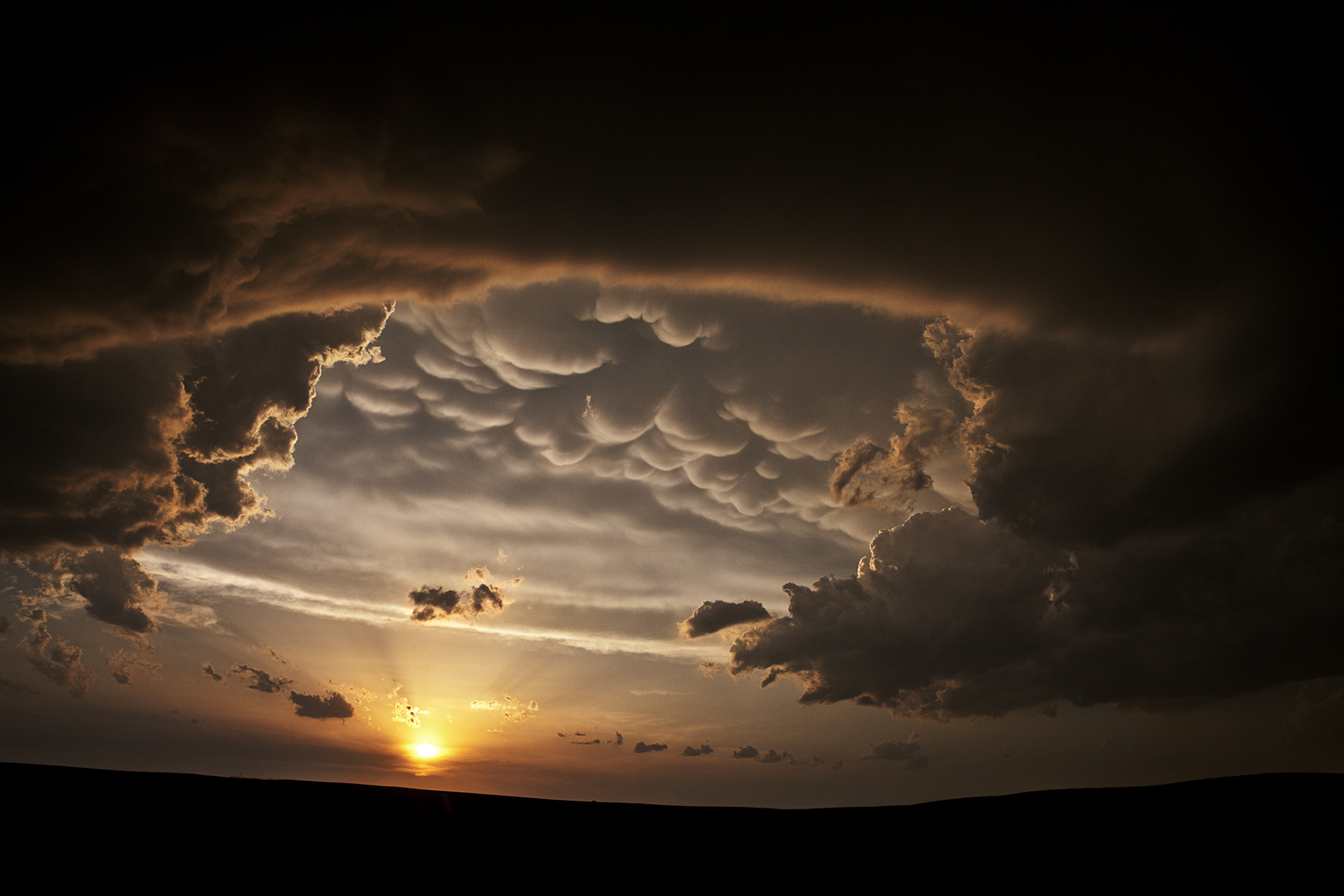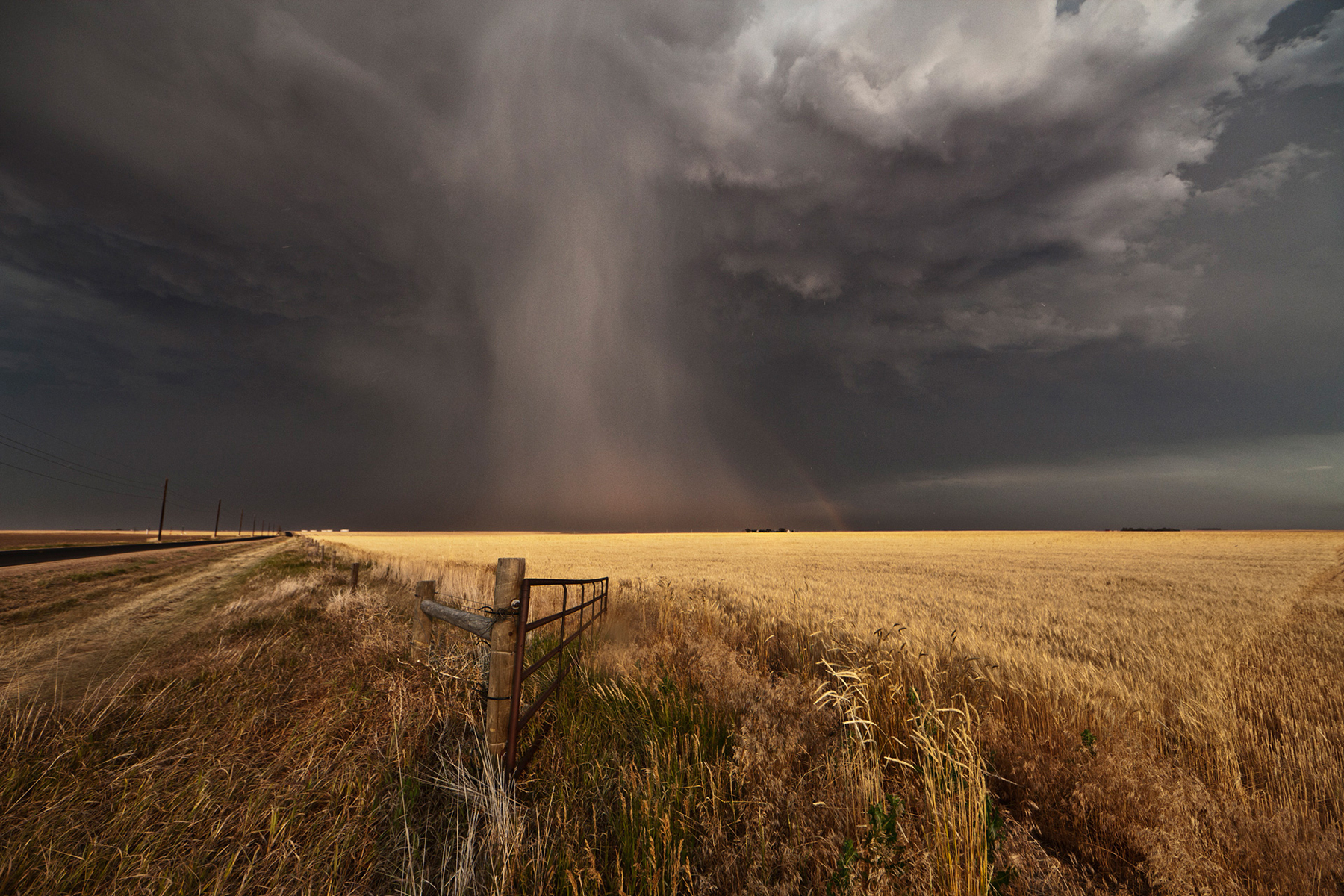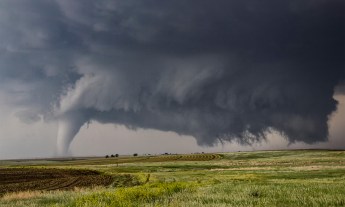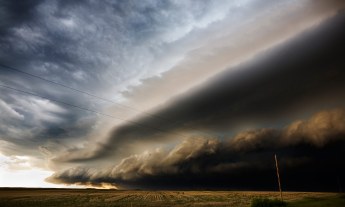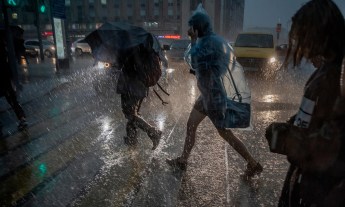When I first began chasing storms in 2008, I knew very little about the hobby — or the weather. I was actually trying to answer a question that had arisen from a previous, decade-long project documenting icebergs in the Polar Regions: How might melting ice affect the weather in more temperate zones?
I certainly had no idea how addicting chasing a cloud could be, and how much of a collector’s club it is. Chasers collect storms like stamps; to miss a good one may haunt you for the rest of your life. It’s not uncommon to hear one chaser ask another, “Were you at Campo?” [Unspoken: beautiful tornado in Colorado, May 31, 2010.] Chasers know the place and date of every storm and tornado they have seen. Some chase for the love of weather, watching specific atmospheric conditions culminate into a powerful event. Others love the forecasting challenge, looking at reams of data to predict where and when a storm will happen. Then there are people like me; those who become mesmerized when standing under the colors, smells and sounds of the storms, in awe of the creative and destructive forces of our planet.
The fact that there are many recognizable traits to big storms becomes apparent within even a few days of chasing. And the practice even has its own vocabulary and slang — universal terms shared by those who come from every corner of the globe to experience Tornado Alley here in the United States. Should you find yourself chasing (never chase alone!), you’ll likely hear certain words and phrases come up again and again. Here’s a handy primer, along with some of my photographs:
What the pros say: “Barber Pole”
What it means: A thunderstorm updraft including cloud striations that are curved like the stripes of a barber pole.
I stood in the knee-high golden wheat fields in Lodgepole, Nebraska, watching this lovely monster consume the sky. I asked our fearless leader, the meteorologist and 22-year veteran chaser, William T. Reid, if we should be worried that it was heading right towards us. “Nah,” he said. “It’s just a Barber Pole LP mesocyclone.” “Oh, of course,” I replied. We stayed in that field for a short while and my mouth fell open in awe as the storm passed over our heads.
What the pros say: “CG”
What it means: Cloud-to-ground lightning strike.
The silence of watching the storm can often be broken by a chaser shouting “CG!” Once, while chasing in South Dakota, there was a CG less than 300 feet from our vehicle, striking the side of the road ahead of us. Our car shook, we all shrieked, it was blindingly bright and we had to stop and put out a small grass fire it started at the edge of the road. On closer inspection, the strike had made an eight-inch hole in the asphalt. To be struck by this type of lightning is certain death; we often remind each other not to lean on barbed wire fences, as the current can easily travel through it for miles. I took this photograph just north of Canadian, Texas.
What the pros say: “Mammatus”
What it means: A cloud formation also known as mammatocumulus (meaning “mammary cloud” or “breast cloud”).
Pouch-shaped clouds indicate sinking air. Standing under such a sky is like being inside an enormous lava lamp. They are some of my favorite cloud formations; I photographed these in Nebraska in 2008.
What the pros say: “Mothership”
What it means: A term used to describe a photogenic mesocyclone; a UFO.
When a supercell — a self-sustaining isolated storm cloud — has enough rotation, it can create a massive discus in the sky. With darkness underneath it and sometimes an internal green or blue glow along with amazing displays of lightning, it’s easy to imagine that any minute now the aliens might begin beaming us up! I took this pictures in Bartlett, Nebraska on my latest stormchasing trip, in June 2014.
What the pros say: “LP Mesocyclone”
What it means: A low-precipitation rotating thunderstorm.
This storm in Chappell, Nebraska, had very little rain, and therefore the rotating structure was visible with the sun setting behind it. The sunset colors took on an oily hue due to the massive wildfires that were burning less than one hundred miles away in Fort Collins, Colorado.
What the pros say: “Rope”
What it means: A thin, sometimes spiraling tornado.
This rope tornado near Woonsocket, South Dakota, was like a cobra in a Marrakech market. It was difficult to take your eyes off of it; it moved with incredible grace. Then it evaporated as quickly as it had descended.
What the pros say: “Shelf Cloud”
What it means: A low, horizontal, wedge-shaped “arcus” cloud, associated with a thunderstorm gust front (or occasionally with a cold front, even in the absence of thunderstorms).
A shelf cloud is attached to the base of the parent cloud above it (usually a thunderstorm). Rising cloud motion often can be seen in the leading, outer part of the shelf cloud, while the underside often appears turbulent, boiling and wind-torn. This is another photograph from my latest storm-chasing trip — my storm-chasing partner Peter Wharton is assessing the situation in Bartlett, Nebraska.
What the pros say: “Wedge”
What it means: A tornado as wide as it is tall (up to the cloud base).
This was an EF-4 tornado I photographed in Bennington, Kansas, in May 2013. (The Enhanced Fujita scale rates the strength of tornadoes in the United States and Canada based on the damage they cause — they’re rated from 0 to 5, with 5 being the most extreme.) It was like nothing I had ever seen before; it was so large and dark. Amazingly, it spun in place for almost 40 minutes before it dissipated. The town less than a mile away from it was totally spared.
What the pros say: “Under the Anvil”
What it means:: The “anvil” is the elongated cloud at the top of a storm that spreads downwind with upper-level steering winds. The anvil will appear solid, not wispy, and will have sharp, well defined edges.
For this South Dakota sunset, we were well under the anvil, which you can see as the white semicircular edge in this image. The mammatus there was a bonus.
What the pros say: “Hail shaft”
What it means: An area of intense hail within a storm.
This image, taken in Gurley, Nebraska, in 2012, clearly shows the bright white shaft of hail along with a “hailbow,” hail’s equivalent of a rainbow. Some hail in these storms can reach up to softball size; I personally have only witnessed baseball-size hail.
Camille Seaman recently founded The Earth Academy to build small sustainable communities and teach people how to live safely and respectfully on this planet. She recently launched a Kickstarter campaign to raise money to build the first community in Detroit. You can see more of her images at www.camilleseaman.com.

